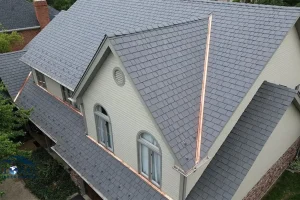Electrical problems in the home can range from minor inconveniences to serious safety hazards. Understanding how to identify and address common electrical issues can save homeowners time and money while ensuring their safety. While some problems may require professional help, many can be diagnosed and fixed with basic knowledge and the right approach. Here’s a guide to recognizing and resolving some of the most frequent electrical issues found in residential properties.
Flickering or Dimming Lights
Flickering or dimming lights are often an early sign of electrical issues. In many cases, the problem is as simple as a loose bulb or a faulty light switch. However, if lights throughout the house dim when large appliances turn on, this could indicate an overloaded circuit or improper wiring.
How to Fix:
- Tighten or replace the affected bulb.
- Check the light switch for any signs of wear and consider replacing it.
- If the issue persists, have an electrician inspect the wiring and circuit load to ensure it can handle the power demand.
Frequent Circuit Breaker Trips
A circuit breaker is designed to protect your home by shutting off power when it detects an overload or short circuit. If your breaker trips frequently, it could be due to too many appliances running on the same circuit, faulty wiring, or a short in an electrical device.
How to Fix:
- Identify which appliances are connected to the affected circuit and redistribute them if necessary.
- Unplug devices and reset the breaker to see if a particular appliance is causing the issue.
- If the breaker continues to trip without an obvious cause, consult an electrician to inspect the wiring.
Dead Outlets
A dead outlet can be frustrating, especially if multiple outlets in the same area are affected. This issue is often caused by a tripped GFCI (ground fault circuit interrupter), a damaged outlet, or a wiring problem.
How to Fix:
- Check nearby outlets with GFCI buttons and reset them if necessary.
- Inspect the outlet for signs of burns or melting, which may indicate a more serious wiring issue.
- If the outlet remains unresponsive, turn off the power at the breaker and replace the outlet.
Warm or Discolored Outlets and Switches
An outlet or switch that feels warm to the touch or shows discoloration may indicate an overheating problem. This could be due to excessive power demand, faulty wiring, or loose electrical connections.
How to Fix:
- Unplug any high-wattage devices from the outlet and test if it still becomes warm.
- Tighten any loose connections inside the switch or outlet box (ensure power is off before doing so).
- If the problem continues, call an electrician to inspect the wiring and replace any damaged components.
Buzzing or Crackling Sounds
Electrical systems should operate silently. If you hear buzzing, crackling, or sizzling sounds from an outlet, switch, or breaker panel, this could indicate loose wiring or a potential short circuit.
How to Fix:
- Immediately turn off power to the affected area.
- Check the outlet or switch for loose connections and tighten them.
- If the sound persists, do not attempt further repairs—contact a qualified electrician to assess the issue.
Overloaded Circuits
Overloading a circuit by plugging in too many devices can lead to power fluctuations, tripped breakers, and even fire hazards. Signs of an overloaded circuit include frequently tripping breakers, dimming lights when devices are used, and outlets that feel warm.
How to Fix:
- Reduce the number of high-power devices connected to the same circuit.
- Consider installing additional circuits or outlets to distribute electrical load more effectively.
- Upgrade old wiring if necessary, especially in older homes with outdated electrical systems.
Electrical Shocks from Outlets or Switches
Experiencing a mild shock when plugging in a device or flipping a switch can be a warning sign of a wiring problem. This issue may be caused by improper grounding, faulty wiring, or a malfunctioning device.
How to Fix:
- Test different devices in the outlet to determine if one particular appliance is causing the shock.
- Check for loose wiring connections and tighten them.
- If the issue persists, consult an electrician to assess grounding and overall wiring safety.
Light Bulbs Burning Out Quickly
If light bulbs in your home burn out frequently, the issue may be related to excessive voltage, poor-quality bulbs, or a faulty fixture.
How to Fix:
- Use bulbs with the correct wattage rating for the fixture.
- Check if the fixture is overheating or has loose wiring.
- If bulbs in multiple rooms burn out quickly, an electrician should evaluate potential voltage fluctuations in your home.
Conclusion
Recognizing and addressing common electrical issues can help homeowners maintain a safe and functional living space. While some problems can be resolved with simple fixes, persistent or more serious electrical concerns should always be handled by a professional. By staying vigilant and understanding how to troubleshoot these common problems, homeowners and electricians alike can ensure that a home’s electrical system remains in top condition.



